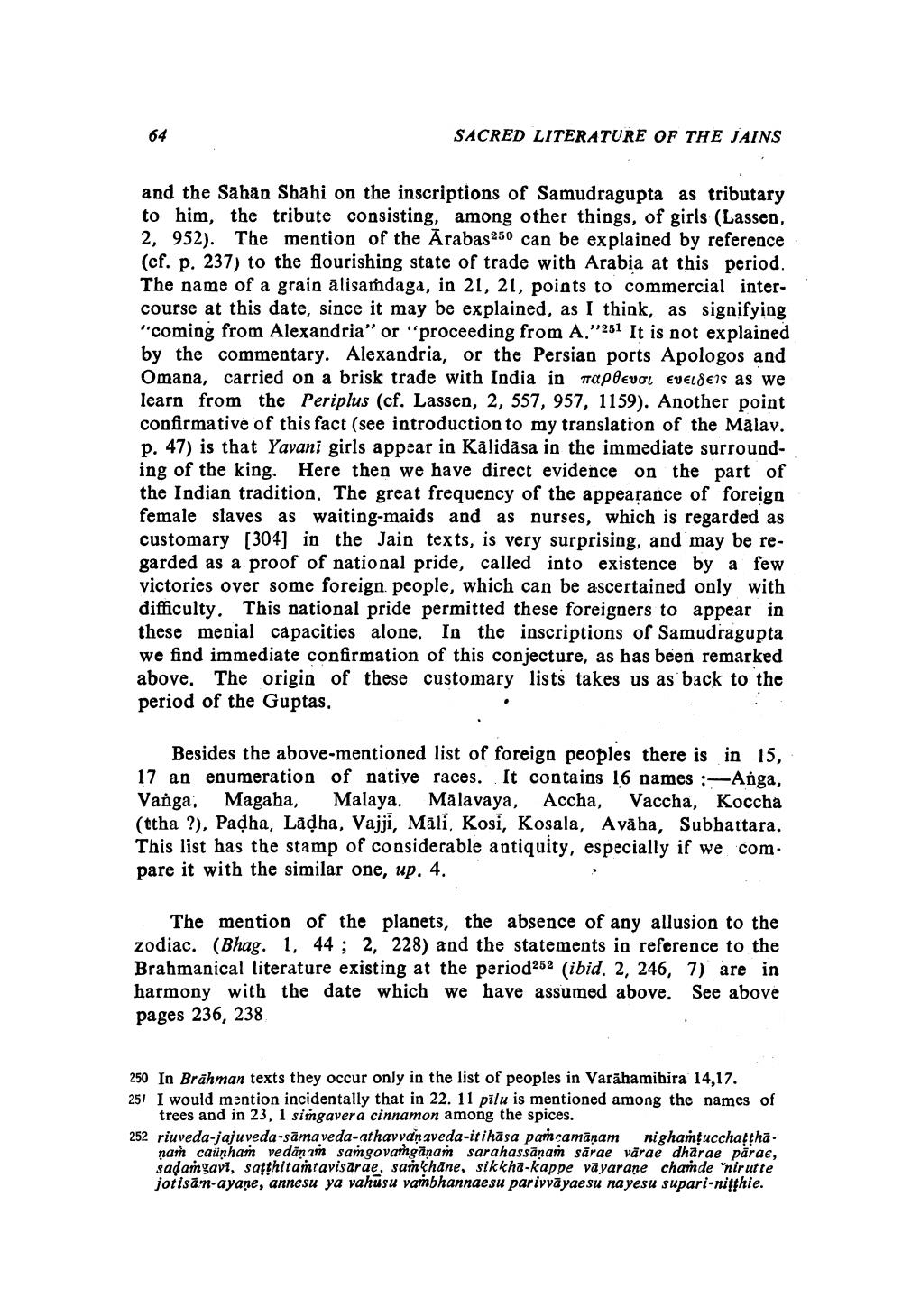________________
SACRED LITERATURE OF THE JAINS
and the Sahan Shāhi on the inscriptions of Samudragupta as tributary to him, the tribute consisting, among other things, of girls (Lassen, 2, 952). The mention of the Arabas 250 can be explained by reference (cf. p. 237) to the flourishing state of trade with Arabia at this period. The name of a grain ālisaṁdaga, in 21, 21, points to commercial intercourse at this date, since it may be explained, as I think, as signifying "coming from Alexandria" or "proceeding from A.”251 It is not explained by the commentary. Alexandria, or the Persian ports Apologos and Omana, carried on a brisk trade with India in napevol EVELSEIS as we learn from the Periplus (cf. Lassen, 2, 557, 957, 1159). Another point confirmative of this fact (see introduction to my translation of the Malav. p. 47) is that Yavani girls appear in Kalidasa in the immediate surrounding of the king. Here then we have direct evidence on the part of the Indian tradition. The great frequency of the appearance of foreign female slaves as waiting-maids and as nurses, which is regarded as customary [304] in the Jain texts, is very surprising, and may be regarded as a proof of national pride, called into existence by a few victories over some foreign people, which can be ascertained only with difficulty. This national pride permitted these foreigners to appear in these menial capacities alone. In the inscriptions of Samudragupta we find immediate confirmation of this conjecture, as has been remarked above. The origin of these customary lists takes us as back to the period of the Guptas,
Besides the above-mentioned list of foreign peoples there is in 15, 17 an enumeration of native races. It contains 16 names :-Anga, Vanga. Magaha, Malaya. Mālavaya, Accha, Vaccha, Koccha (ttha ?), Padha, Ladha, Vajji, Mali, Kosi, Kosala, Avå ha, Subhattara. This list has the stamp of considerable antiquity, especially if we compare it with the similar one, up. 4.
The mention of the planets, the absence of any allusion to the zodiac. (Bhag. 1, 44 ; 2, 228) and the statements in reference to the Brahmanical literature existing at the period252 (ibid. 2, 246, 7) are in harmony with the date which we have assumed above. See above pages 236, 238
250 In Brāhman texts they occur only in the list of peoples in Varahamibira 14,17. 251 I would mention incidentally that in 22. 11 pilu is mentioned among the names of
trees and in 23, 1 singavera cinnamon among the spices. 252 riuveda-jajuveda-samaveda-athavvaņaveda-itihāsa pañcamāņam nighamţucchartha.
naí cainhañ vedän an sagovařgāna sarahassānam sārae värae dharae pärae, sadamgavi, satthitamtavisārae, sankhāne, sikkha-kappe vāyarane chande nirutte jotisan-ayane, annesu ya vahusu vambhannaesu parivvāyaesu na yesu supari-nitthie.




